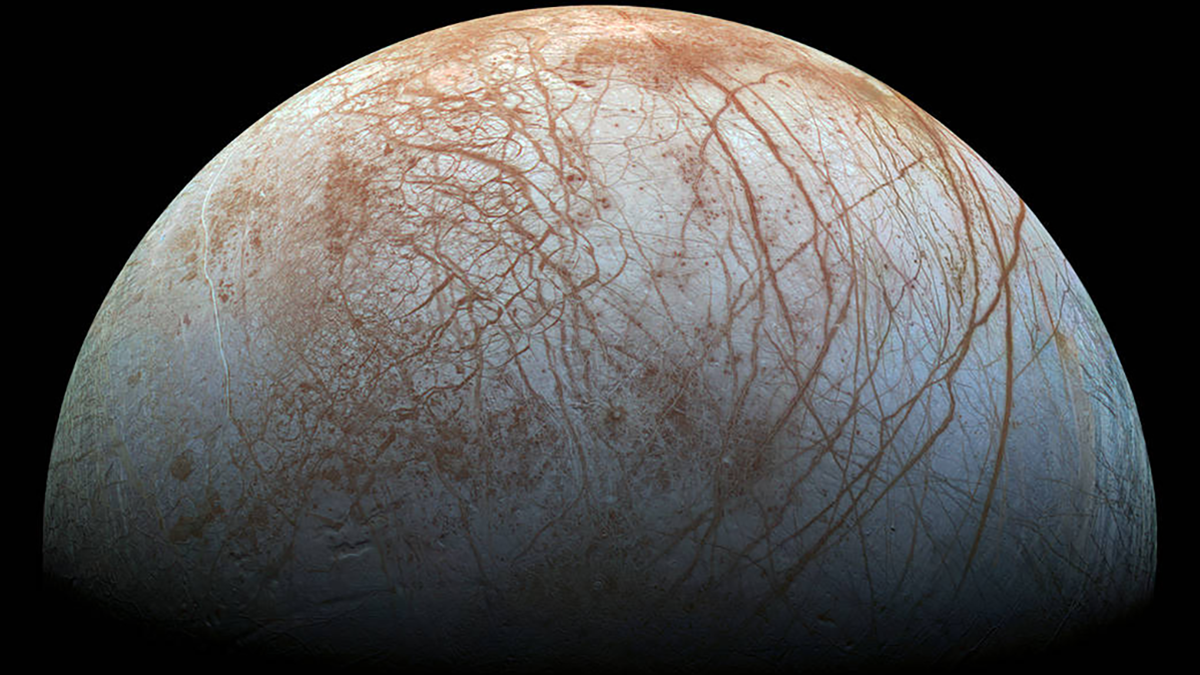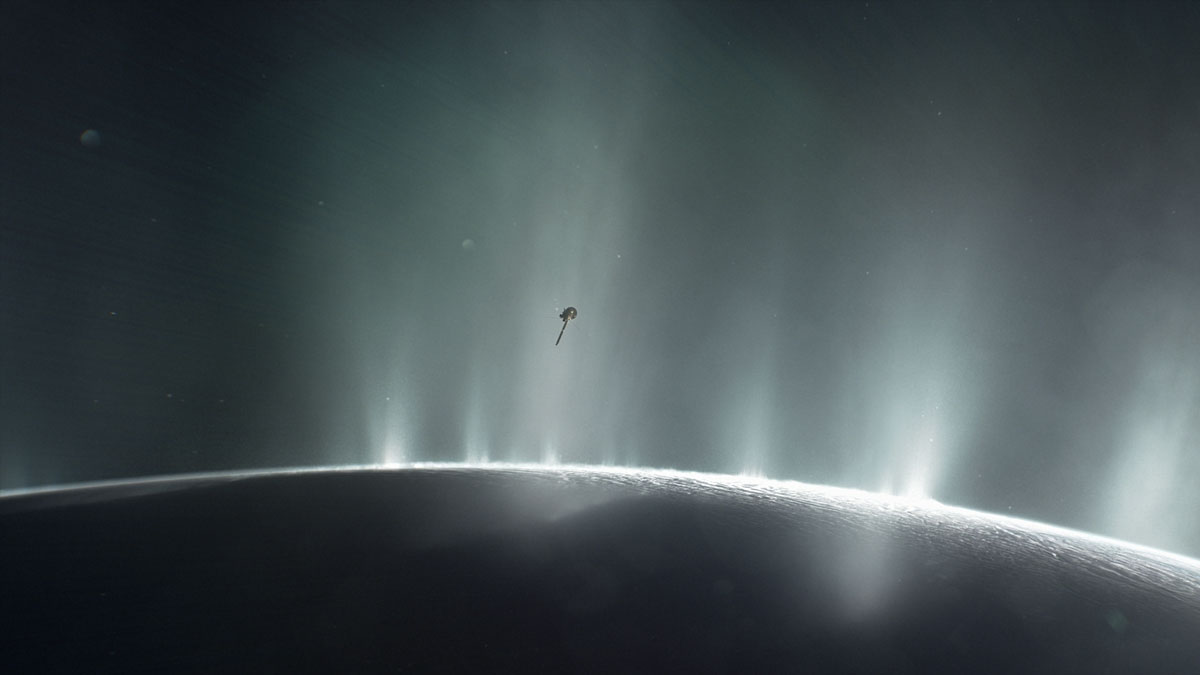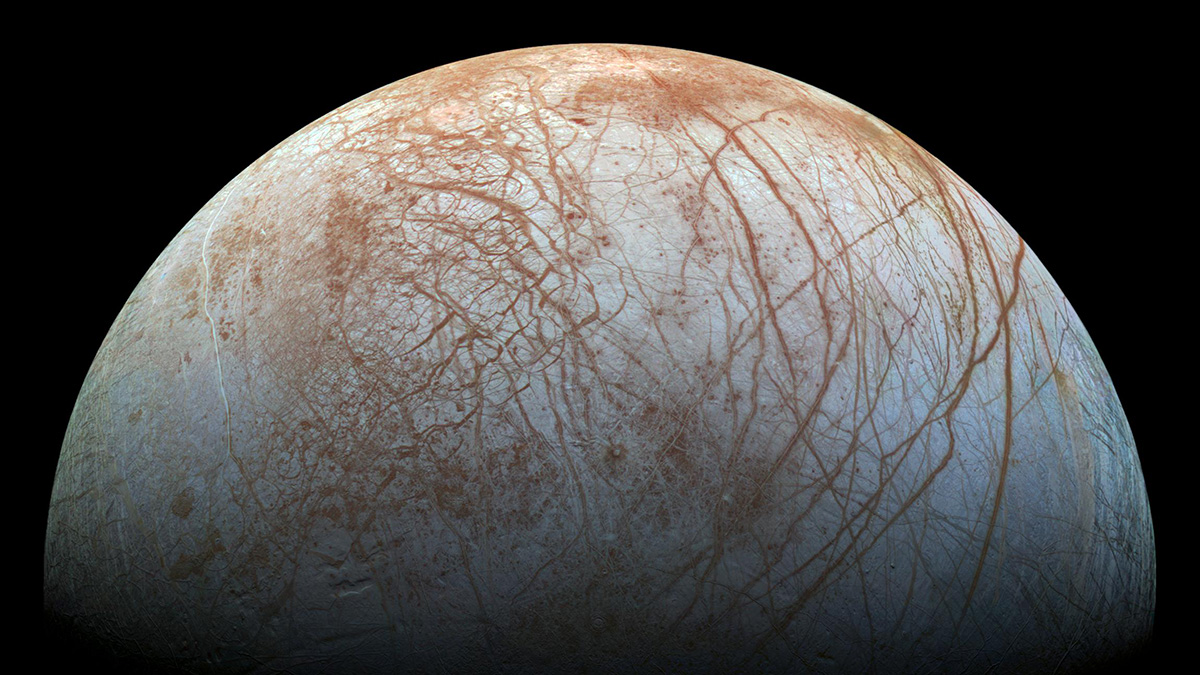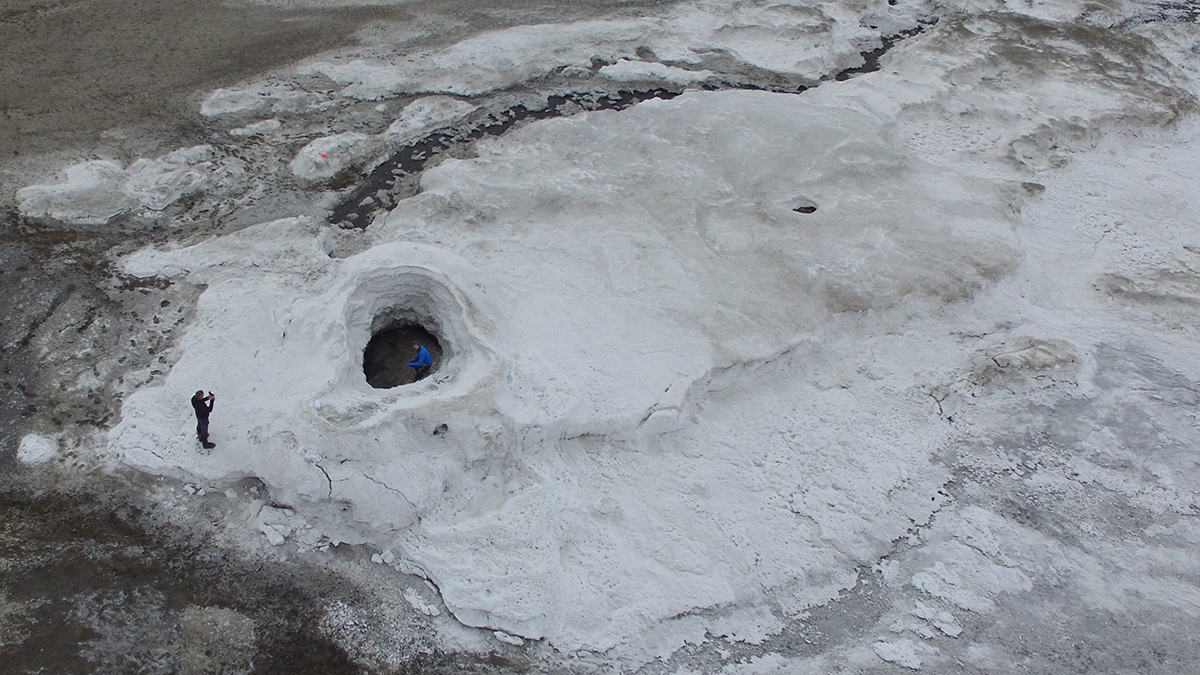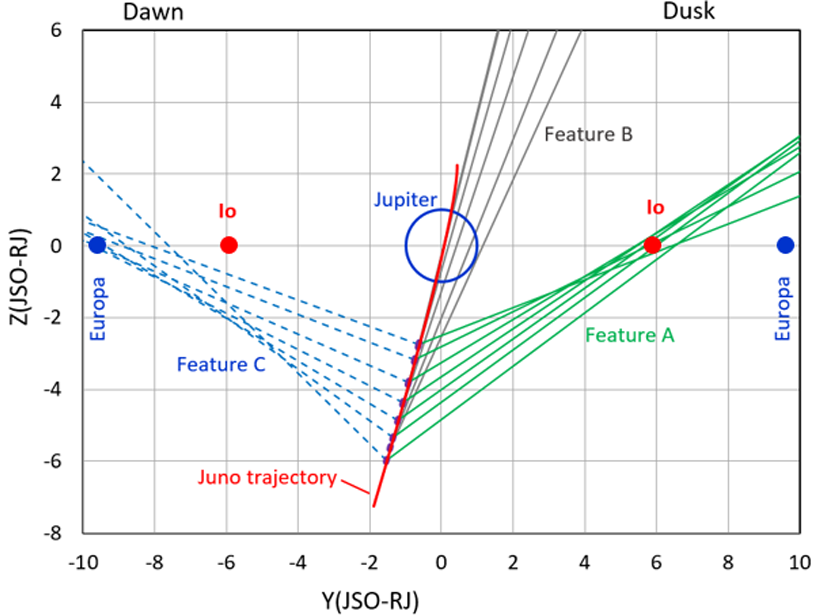A model using currents in the deep ocean to drive rotation of Europa’s ice shell from below can explain why its surface may drift despite being tidally locked.
Europa
Newly Discovered Salts May Exist on Icy Moons
For the first time in more than a century, scientists have identified new sodium chloride crystals. The discovery may reconcile puzzling spectroscopic images of Europa’s surface.
Marine Science Goes to Space
Space and ocean scientists take a splash course in multidisciplinary science to chart our solar system’s ocean worlds.
Europa’s Plate Tectonic Activity Is Unlike Earth’s
The moon of Jupiter has likely experienced intermittent, regional plate tectonic activity in the past, although the plates are currently dormant.
Zipping Up Data to Zap Them Back from an Icy Moon
NASA wants to send instruments to distant moons like Europa and Enceladus to search for life. But getting vital data back to Earth over limited bandwidth will take some impressive compression software.
Dynamics of Ocean Worlds Likely Controlled by Their Rotation
New simulations suggest that subsurface oceans on icy moons with small natural Rossby numbers may be dominated by rotational effects.
Lipids from Europa’s Ocean Could Be Detectable on the Surface
A super salty spring in the Canadian Arctic provides insights key to detecting life on a distant ocean world.
New Energetic Neutral Atom Emissions from Jupiter, Io, and Europa
The first Jovian off-equator Energetic Neutral Atom viewings reveal distinct emissions from Jupiter and the orbits of Io and Europa: Energetic particle injections surprisingly occur inside Io’s orbit.

